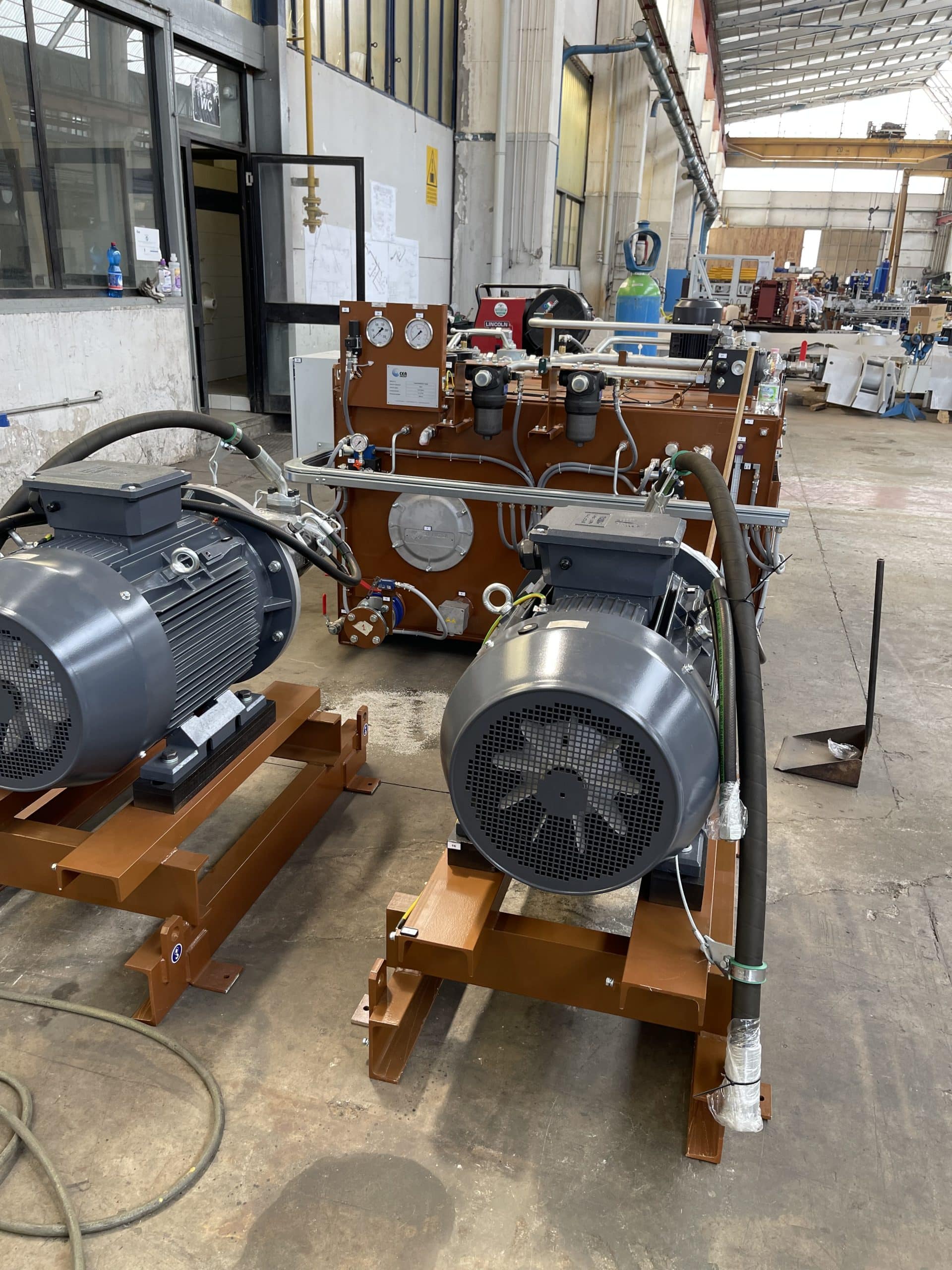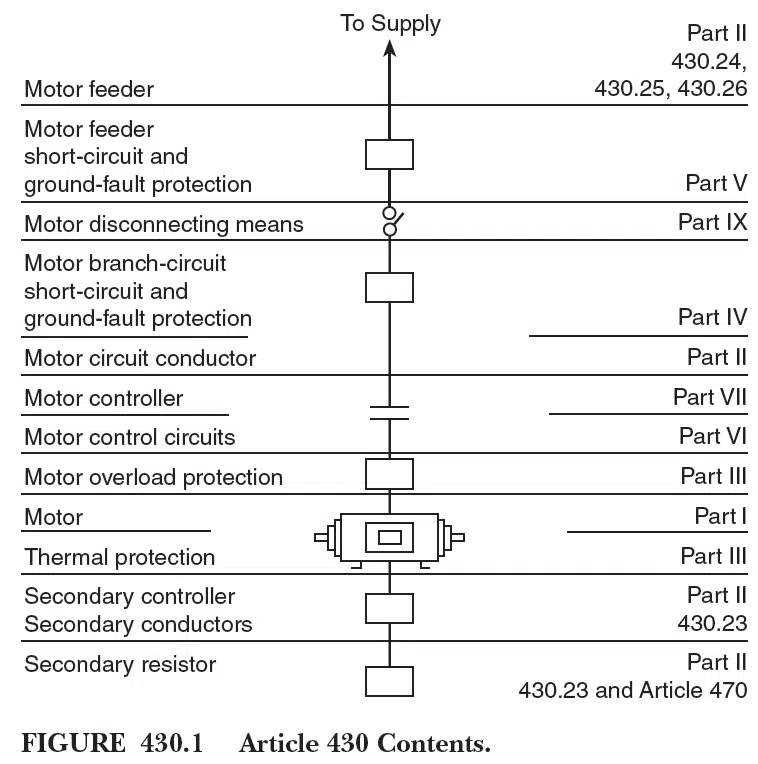Last edit: 17/07/2023

Article 430 in the National Electrical Code (NEC) is titled “Motors, Motor Circuits and Controllers.” As the scope of the article states, it covers motors, motor branch-circuit and feeder conductors, motor branch-circuit and feeder protection, motor overload protection, motor control circuits, motor controllers, and motor control centers.
With most circuits, conductors are protected against overcurrent in accordance with their ampacities by overcurrent protective devices such as fuses and circuit breakers. A Motor branch circuit has two types of protections:
- A Branch Circuit Protection Device (BCPD): that protects from short circuit and ground faults
- An oveload protection.
From this point of viiew, traditionally, Fuses and circuit breakers are not installed to provide overload protection: overload devices are usually installed to protect motors, motor-control apparatus and motor branch-circuit conductors against excessive heating due to motor overloads and failure to start.
Fuses and circuit breakers are usually installed on motor circuits to protect the motor branch-circuit conductors, the motor control apparatus and the motors against overcurrent due to short circuits or ground faults. This is why fuses and circuit breakers installed in motor circuits are not called overcurrent protective devices; they are called motor branch-circuit short-circuit and ground-fault protective devices. Requirements for motor overload protection are in Part III of Article 430.
The title of 430.52(C) is “Rating or Setting” and it has seven subsections:
- (1) In Accordance with Table 430.52,
- (2) Overload Relay Table,
- (3) Instantaneous Trip Circuit Breaker,
- (4) Multispeed Motor,
- (5) Power Electronic Devices,
- (6) Self-Protected Combination Controller, and
- (7) Motor Short-Circuit Protector.
As 430.52(D) states, torque motor branch circuits shall be protected at the motor nameplate current rating in accordance with 240.4(B). Please bear in mind that in both USA and Canada the sizing of a Branch needs to consider both motor current (Full Load Ampacity) and the motor tabled current ot FLC (full-load current).
The figure shows the relevant area of the various parts of the article.
